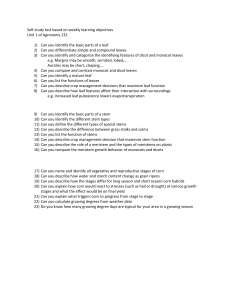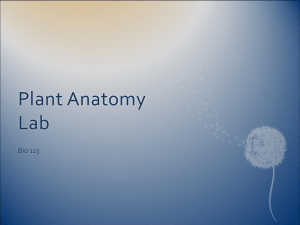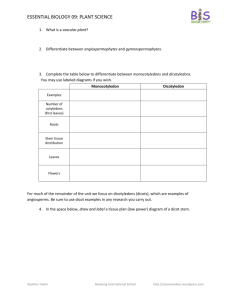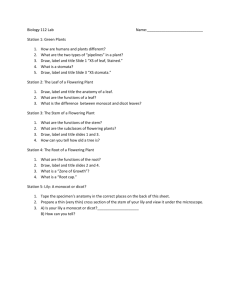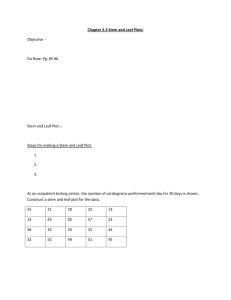Lab Practical Review for Bio 105
advertisement
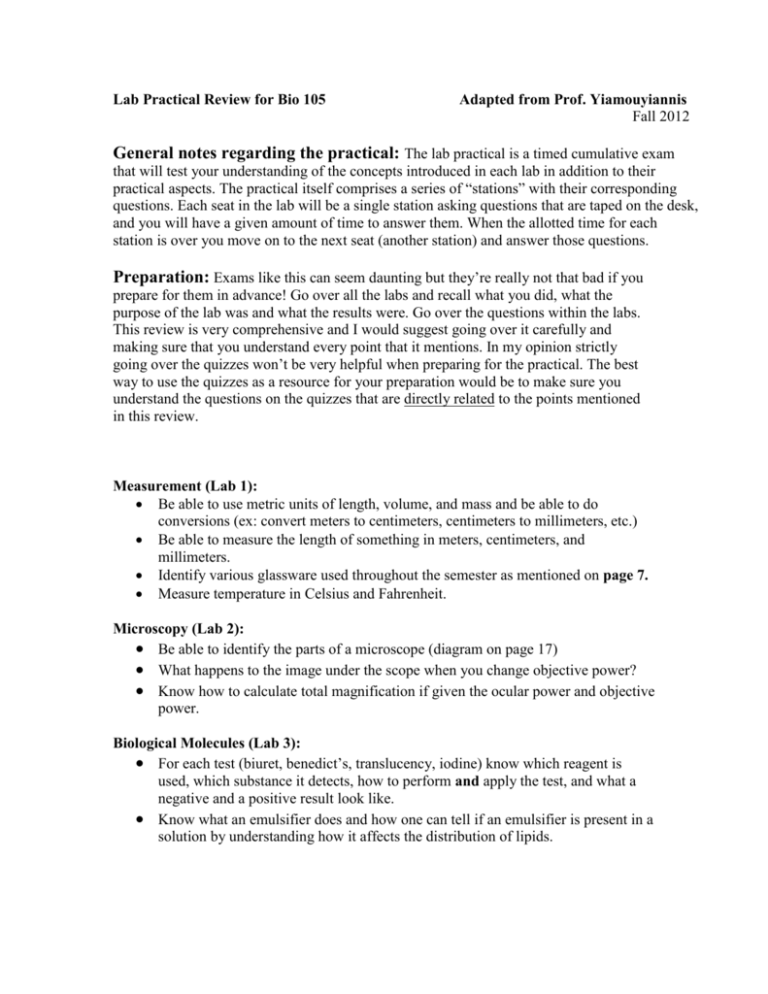
Lab Practical Review for Bio 105 Adapted from Prof. Yiamouyiannis Fall 2012 General notes regarding the practical: The lab practical is a timed cumulative exam that will test your understanding of the concepts introduced in each lab in addition to their practical aspects. The practical itself comprises a series of “stations” with their corresponding questions. Each seat in the lab will be a single station asking questions that are taped on the desk, and you will have a given amount of time to answer them. When the allotted time for each station is over you move on to the next seat (another station) and answer those questions. Preparation: Exams like this can seem daunting but they’re really not that bad if you prepare for them in advance! Go over all the labs and recall what you did, what the purpose of the lab was and what the results were. Go over the questions within the labs. This review is very comprehensive and I would suggest going over it carefully and making sure that you understand every point that it mentions. In my opinion strictly going over the quizzes won’t be very helpful when preparing for the practical. The best way to use the quizzes as a resource for your preparation would be to make sure you understand the questions on the quizzes that are directly related to the points mentioned in this review. Measurement (Lab 1): Be able to use metric units of length, volume, and mass and be able to do conversions (ex: convert meters to centimeters, centimeters to millimeters, etc.) Be able to measure the length of something in meters, centimeters, and millimeters. Identify various glassware used throughout the semester as mentioned on page 7. Measure temperature in Celsius and Fahrenheit. Microscopy (Lab 2): Be able to identify the parts of a microscope (diagram on page 17) What happens to the image under the scope when you change objective power? Know how to calculate total magnification if given the ocular power and objective power. Biological Molecules (Lab 3): For each test (biuret, benedict’s, translucency, iodine) know which reagent is used, which substance it detects, how to perform and apply the test, and what a negative and a positive result look like. Know what an emulsifier does and how one can tell if an emulsifier is present in a solution by understanding how it affects the distribution of lipids. Movement of Molecules (Lab 4): Define diffusion, osmosis, and know what tests you did to demonstrate these concepts. Understand how to determine if dialysis tubing is permeable to a given substance if its size is known. Also understand how to experimentally determine the permeability of a dialysis membrane to starch. What structure in the cell does the tubing represent? Be able to describe what happens to a plant or animal cell in a hypotonic, hypertonic, and isotonic solution. Be able to recognize a plant or animal cell that is in a hypo or hypertonic solution. Enzymes and pH (Lab 5): Enzymes Know the reactions for each of the enzymes we studied (amylase, lipase, and rennin) and what the substrates and products are. How were you able to tell if amylase, lipase, and rennin were working normally? (i.e. what tests did you use and how did the results let you know if they were working?) How does extreme heat or cold affect an enzyme’s activity? pH Be able to measure the pH of a substance and tell whether that pH is basic, acidic, or neutral. Photosynthesis and Cell Respiration (Lab 6): (This was a tough one!) Know the reactions for photosynthesis and cell respiration. Recall the experiment you did to demonstrate photosynthesis and understand the set-up (experiment 3 on page 41) Why did the water level rise? Understand that there are many pigments to trap sunlight in a leaf. What procedure allowed you to separate colors? Know the different pigments (colors) in a green leaf. What happens to the pH and the CO2 content of distilled water as you breathe into it? When you add a plant to the same solution that you breathed into, what happens to the pH and the CO2 content? What part of the geranium leaf should have starch, the shaded or the unshaded side? Cell Division and Genetics (Lab 7) Cell Division Be able to recognize when a plant or animal cell is in the various stages of mitosis and if it’s in Interphase. The following website provides a useful PowerPoint showing the stages of mitosis and interphase facultyfiles.deanza.edu/gems/gilleskay/CellReproductionCh8nna.ppt Identify organelles on either a plant or animal cell model (The Krogh textbook will be helpful, pg. 70 for animal and page 443 for plant for the 5th edition) Genetics Go over mono and dihybrid crosses. Go over Mendelian traits, know the possible genotypes for dominant and recessive traits. Go over genetics problems and blood typing. Evolution (Lab 8): Define evolution. Know the timelines for the major eras. Have an idea of which organisms came first, second, third, etc. What is industrial melanism? What process does it illustrate? Protists (Lab 9): Know the three groups of protists (protozoa, algae, and fungal-like protists) Know the different parts of the organisms you studied and labeled. For each protist, know whether it is autotrophic or heterotrophic Fungi (Lab 10): How did we demonstrate fermentation? What is the reaction for fermentation? What specific organism is responsible for fermentation? Identify lichens. Which two organisms exist symbiotically in lichen? Plants (Lab 11): Know the four divisions of plants, their characteristics and examples of each. Distinguish between a monocot and dicot by looking at the flowers or stem. Know the anatomy of a flower, leaf, root, and stem Flower: Petals Stamen: filament and anther Pistil: ovary, style, stigma Root: xylem, phloem, and rest of structures on pg. 79 Stem: xylem, phloem, and rest of structures on pg. 79 How can you tell a monocot from a dicot by looking at the stem? Animals (Lab 12): Know the 9 different phyla, their characteristics (ex. Radial or bilateral symmetry, invertebrate or vertebrate) and examples of animals in each phylum. Know how to determine the sex of a crayfish or grasshopper. How do these creatures breathe? Fetal Pig (Lab 13): Be able to identify the structures of the male and female pig that are in bold in the lab manual. Be able to distinguish a male fetal pig from a female.
